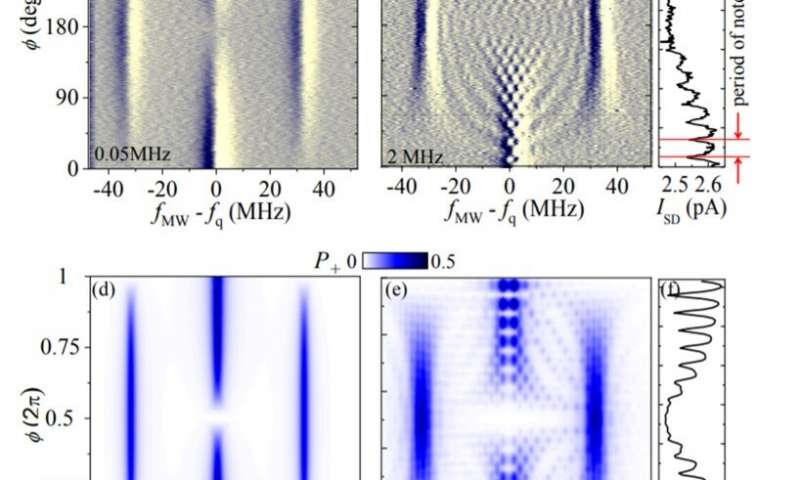HOME
Quantum heat engine behaviour observed in a qubit

Comparison of the measured peak currents (top) and the calculated excitation probabilities (bottom) showed a perfect match for the device in the incoherent regime (left) and coherent regime where the function becomes a superposition of heat engine and refrigerator operation (right). Credit: Physical Review Letters
Although many of today's accepted theories of classical thermodynamics predate even the industrial revolution they helped to propel, many open questions remain around how these ideas translate to the level of single quantum systems. In particular, the potential for superposition of states has as yet unexplored implications for thermodynamic behavior. Now, a collaboration of researchers in Japan, the Ukraine and the U.S. has produced a quantum device that can not only behave analogously to a heat engine and a refrigerator, but also a superposition of both at the same time.
Keiji Ono, Sergey Shevchenko and Franco Nori—who share an affiliation with RIKEN in Japan, among their other institutions, B. Verkin Institute for Low Temperature Physics and Engineering and the University of Michigan—had all been working with qubits in various guises. They came together to examine the behavior of qubits based on impurities in silicon for quantum interferometry before turning their attention to how the behavior of these systems might resemble classical heat engines.
Exploring thermodynamics at the quantum level opens up some intriguing possibilities. "One of the subjects discussed in this field is the possibility of quantum heat engines to overcome the efficiency of classical ones," Shevchenko suggests as an example. However, it is not without its challenges, which means most studies so far have been purely theoretical. Among other characteristics, for quantum engineering, it is important to have qubits which are "hot, dense, and coherent," Shevchenko tells Phys.org. Here, "hot" means working in the few-Kelvin regime, which, while still pretty frosty, is less technologically challenging than systems that require cooling down to millikelvins. The trade-off is that such hot systems are harder to describe and control, but here, the researchers were able to exploit their wealth of expertise with silicon-based qubits.
News Source